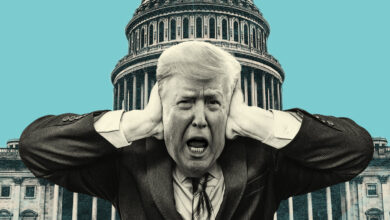India, the sixth-largest economy in the world, affected by the exodus of EM investors
The central bank has been working to stop the rupee's decline, but a rapid decline will exacerbate inflationary pressures and could lead to further rate increases, which would be detrimental to economic growth.

As India’s currency hit new lows, investors still grieving from the devastating selloff in developing markets during the last six months abandoned the rupee once more, forcing the government to slash oil and gold imports in order to stop a growing imbalance.
In an effort to close the current account downfall, the government increased charges on gasoline and diesel exports while increasing import tariffs on gold. Following the actions, Reliance Industries Ltd.

The moves highlight how emerging economies, in particular those with concurrent current account and fiscal deficits, are more subject to pressure on their currencies as the Federal Reserve’s aggressive rate rises amplify capital outflows. The rupee has recently fallen to a string of record lows despite having the fourth-largest reserve accumulation in the world. The other high-yielding currency in Asia, the Indonesian rupiah, saw a two-year low on Friday.

As the Fed tightens its monetary policy, policymakers in many emerging markets are faced with difficult choices as they try to combat rising inflation and capital flight: raise rates and risk harming growth; use reserves that took years to accumulate to defend currencies; or simply step aside and let the market take its course.
According to Madhavi Arora, lead economist at Emkay Global Financial Services, the measures “seek to lessen the looming pressure on the current account deficit and hence the currency.” The anticipated pain on the balance of payments deficit this year is fundamentally reflected by complementary policy initiatives from both the fiscal and monetary side.
Banks have reported dollar shortages as investors and businesses rushed to exchange the rupee for other assets or to pay for imports, despite the Reserve Bank of India’s efforts to moderate the rupee’s 6% slide this year. According to the Finance Ministry, the most recent restrictions were prompted by a sharp increase in gold imports in May and June.
Reversing a reduction from the previous year, the government increased the import tax on gold to 12.5%. Shares of Reliance Industries, a major exporter, fell as much 8.9 percent as a result of the increased taxes on the shipment of gasoline and diesel.

India is the second-biggest consumer of gold in the world, and as a result of the higher import costs, local futures in Mumbai increased by as much 3%, which was the largest intraday increase in over four months.
In order to save foreign exchange, India is attempting to prevent the import of gold, according to Finance Minister Nirmala Sitharaman. “Extraordinary times,” she continued, need such actions, such as the introduction of a windfall tax on gasoline exports.
Rahul Bajoria, senior economist at Barclays Bank Plc, stated that all problems stem from increased commodity prices. “Neither will we be able to reduce our consumption of oil nor will India be able to locate a supply onshore. Because of this, the entire scenario is much more unexpected in terms of how it will turn out and how long it will last.
A decline in Indian exports might significantly tighten global markets for petroleum in general, which are already struggling with declining Russian supplies and growing post-pandemic demand.
The actions on Friday show the central bank will have a challenging battle on the international front in the coming months. According to RBI Governor Shaktikanta Das, the central bank has a multifaceted intervention strategy to reduce actual dollar outflows and won’t let a rapid devaluation of the rupee.
The RBI has close to $600 billion in foreign exchange reserves, despite Sri Lanka’s problem with a dollar shortage that is causing hyperinflation, which has alerted investors to the pressures on emerging markets. But as the central bank intensifies its effort to arrest the rupee’s collapse amid capital outflows and a current account gap that is anticipated to treble this year, those reserves are being depleted.
Investors should anticipate further currency depreciation, according to Arvind Chari, chief investment officer at Mumbai’s Quant Advisors Pvt. Will increased export tariffs have an effect on business activity? Perhaps not in the near future, but perhaps in the medium to long term.




